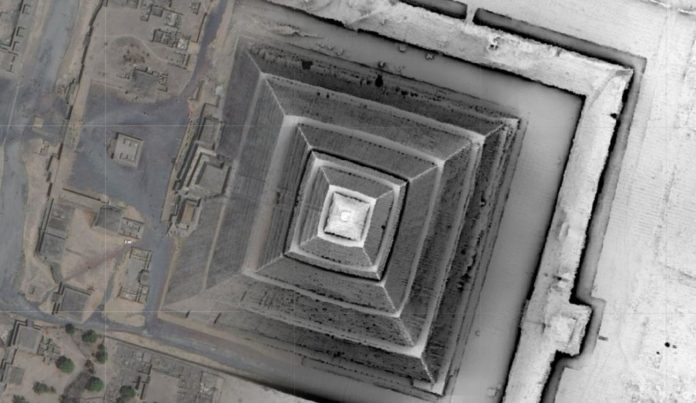We don’t forget history, but we do deal with the consequences of our actions in the past. The risks of those actions are still visible on the landscape in a monumental city like Teotihuacan, according to the first author of the study.
A lidar mapping study, released in the open-access journal PLOS One, with the help of cutting-edge aerial mapping technology reveals that ancient Teotihuacan residents moved enormous amounts of soil and bedrock for construction and reshaped the landscape in a way that continues to influence the contours of modern activities in this part of Mexico.
The article demonstrates how Teotihuacan’s engineers diverted two rivers to align with astronomical markers, discovered hundreds of previously unknown architectural features, and documented over 200 archaeological features destroyed by mining and urban sprawl since the 1960s.
Teotihuacan, located approximately 25 miles northeast of modern Mexico City, was the largest city in the Americas and one of the largest in the ancient world. It lasted from about 100 BCE to 550 CE, or 1,000-2,000 years ago, and covered an area of 8 square miles.
It had a population of around 100,000 people at its peak and was made up of numerous pyramids, plazas, and well-designed residential and commercial neighbourhoods. Some of the pyramids and other structures can still be seen above ground, but the majority of the city’s ruins are buried beneath modern fields, buildings, and other activity areas.
Nawa Sugiyama and co-authors Saburo Sugiyama at Arizona State University, Tanya Catignani at George Mason University, Adrian S. Z. Chase at Claremont University, and Juan C. Fernandez-Diaz at Houston University used lidar, a mapping technology that measures the amount of time it takes light from a laser to bounce back from an object, to map the below-ground parts of Teotihuacan. Archaeologists frequently use lidar to discover buried features covered by dense forests or open fields, but the technology is rarely used to discover archaeological remains beneath urban areas.
Sugiyama’s group believed that lidar could help clarify the relationship between the layout of Teotihuacan and modern activities that overlay it because the sheer scale of construction at Teotihuacan suggested massive modification of the ancient landscape. The lidar findings were confirmed by the researchers through foot surveys and comparisons to previous mapping efforts.
They discovered that the Teotihuacan builders levelled the ground down to the bedrock and, in some cases, dug up the bedrock itself to use as construction and fill material. The authors calculated that roughly 372,056 square metres of artificial ground racked up over the course of roughly 300 years of construction in just one area of the city, called the Plaza of the Columns Complex, that had been quarried elsewhere in the Teotihuacan Valley. The authors estimate that 2,423,411 square meters of rock, dirt, and adobe were used in three of the main pyramid complexes.
This major reshaping of the landscape has an impact on the layout of modern construction and activities. The authors discovered that 65 percent of urban areas had property or modern features that were orthogonally aligned within 3 degrees of 15 degrees east of astronomical north – the same alignment as Teotihuacan. Rock fences were erected in areas where lidar and excavation revealed ancient underground walls that made modern-day ploughing difficult.
Engineers at Teotihuacan also rerouted the Rio San Juan and the San Lorenzo Rivers, which run through the city. Rio San Juan follows the Teotihuacan orientation for 3 kilometres as it flows through the city center, whereas the San Lorenzo River has a very distinct orientation, 8 degrees south of astronomical east for 4.9 kms. Previous research has interpreted them as significant canals with symbolic and Astronomical significance.
The lidar map also revealed that other sections of canals and rivers, many of which are still in use presently, were transformed at various points along their routes, frequently coinciding with Teotihuacan directionalities. A total of 16.9 km of the modern-day hydrological systems have their origins in the Early Classic Teotihuacan landscape.
The group discovered 298 previously unrecorded features and 5,795 man-made terraces on the lidar map. They did, however, discover over 200 known features that have been destroyed by mining since 2015.
The authors intend to use their lidar map to create a three-dimensional geospatial database that will allow them to observe stratigraphic and surface data, natural and artificial features, and document the true extent of humans as geomorphic agents in the Teotihuacan Valley over long periods of time.
